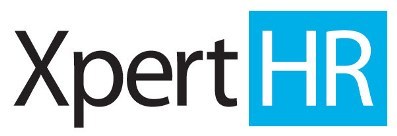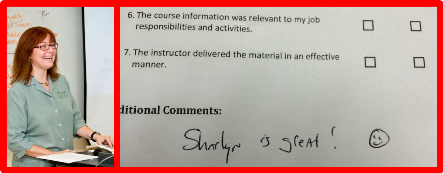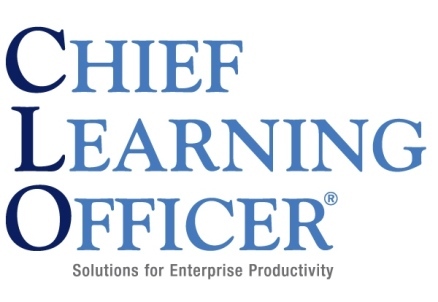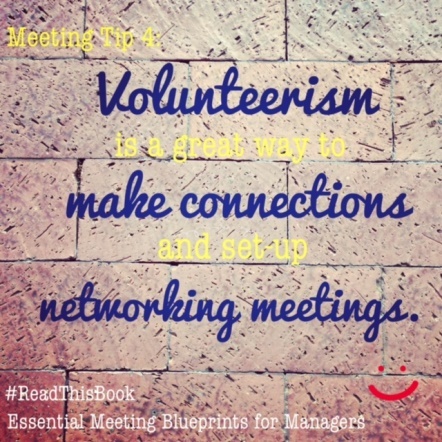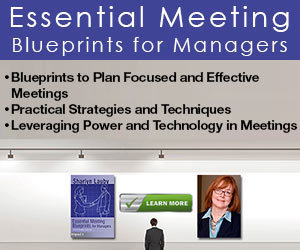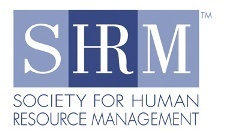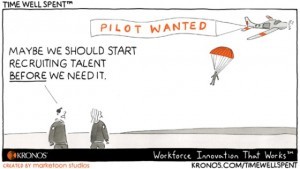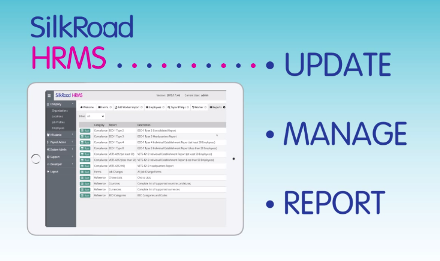Sharlyn J. Lauby's Blog, page 178
April 30, 2015
The Impact of UK’s Shared Parental Leave Law – Ask #HR Bartender
I recently received a question about the United Kingdom’s Shared Parental Leave law. Simply put – what is it, how does it work, and most importantly how does it impact companies and employees.
Since I do not live in the UK, I reached out to Michael Carty from XpertHR to help me understand this new piece of legislation. Michael is the editor of XpertHR’s Benchmarking data service. I’ve known Michael for years and he graciously agreed to share his knowledge.
And if you’re wondering why a U.S. blog would write about UK employment law, it’s simple. We can no longer think in terms of “my” country and “your” country. Issues like parental leave exist everywhere. Laws in the UK could easily get proposed in the U.S. and vice versa.
Michael, I know this first question is a toughie. Can you give us a brief description of the United Kingdom’s new shared parental leave law?
 [Michael] It’d be my pleasure. The new right to shared parental leave is probably the most significant change to UK employment law over the past few years. Shared parental leave gives mothers the right to end their period of maternity leave early and share untaken leave and pay with their partner.
[Michael] It’d be my pleasure. The new right to shared parental leave is probably the most significant change to UK employment law over the past few years. Shared parental leave gives mothers the right to end their period of maternity leave early and share untaken leave and pay with their partner.
The new right applies to working couples with babies due on or after 5 April 2015, provided each parent qualifies for leave and pay in their own right. There are similar arrangements for adoptive parents. You can find full details of shared parental leave in the XpertHR employment law manual.
Shared parental leave also offers parents flexibility in terms of how and when they take the leave. Eligible parents can request discontinuous periods of leave – that is, more than one period of shared parental leave, in blocks of at least a week.
All shared parental leave must be taken before the child’s first birthday or the first anniversary of the adoption placement.
Parents on shared parental leave can share up to 37 weeks’ statutory shared parental pay between them, at a flat rate of £139.58 per week from April 2015, or 90% of the employee’s earnings if this is less. The rate of statutory shared parental pay is the same as the rate of statutory maternity pay. For comparison purposes, average weekly earnings for UK workers are £459, according to latest official data.
One in five employers is planning to enhance their shared parental pay offering above the statutory minimum, new XpertHR Benchmarking research on preparations for shared parental leave finds.
Why was this new law created?
[Michael] The UK Government says shared parental leave is a family-friendly right, designed to promote a culture shift toward flexible working options for modern families.
Employment Relations Minister Jo Swinson recently wrote in Personnel Today of her hopes that ‘the outdated assumption that child care is only an issue for mums will be firmly put to bed as shared parental leave becomes more established.’
However, the XpertHR survey suggests that the UK HR profession has mixed views on shared parental leave. HR supports shared parental leave in principle. But it is concerned that the new right is complex to administer in practice.
I completely understand how a complex new law of this magnitude can be overwhelming. I know XpertHR has created several models and forms to help organizations manage this new law. But beyond the paperwork, is there a benefit for employers with this new law?
[Michael] Overwhelming is probably the right word!
HR welcomes the opportunity to offer shared parental leave to new parents. But nearly half of HR professionals taking part in our survey think that the introduction of shared parental leave has created a significant administrative workload for them.
The wording of shared parental leave legislation attracted particular criticism. For example, one HR professional described it as ‘user-unfriendly.’ There was also a general feeling that a lot of the heavy lifting on making shared parental leave work has been left to HR. Things should become clearer once the level of takeup is known, and when and if related case law provides further clarity around the new right.
But – for all its concerns about how shared parental leave will work in practice – HR strongly supports its underlying principles and purpose. Not one HR professional in our survey questioned whether or not it was right for the Government to introduce legislation to encourage both parents to take equal responsibility for child care.
What do employees need to know about the shared parental leave law?
[Michael] Above all, eligible employees need to know about the options available to them.
However, only a minority of employers in our survey have taken any action to raise awareness of the right to shared parental leave. Further, the survey suggests that HR lacks confidence in line managers when it comes to understanding and communicating the intricacies of the new right.
Eligible employees also need to weigh up the implications of moving to shared parental pay. Some could find themselves earning significantly less than normal while they take shared parental leave.
Shared parental leave could therefore be unaffordable for some eligible couples. One HR professional in our survey was concerned ‘that shared parental leave is going to be a more viable option for high earners, who are more likely to be able to afford to take it.’
Lastly, I see laws like this one being debated not only in the UK but globally. Do you see any global trends regarding parental rights that organizations should pay attention to?
[Michael] The groundswell of international interest in shared parental leave suggests it is an idea whose time has come.
I’d advise your readers to pay attention to the experience of employers in countries where shared parental leave arrangements have been introduced. Besides the UK, some other countries have their own shared parental leave offerings. For example, Sweden offers an ‘equality bonus’ – a tax credit – to encourage a more equal takeup of parental leave by men and women.
Think about what a right to shared parental leave means in practice, and how it might affect your organization. Ask yourself these questions:
What level of pay would you offer to employees taking shared parental leave?
What level of takeup could you expect?
Would there be any issues around arranging cover for employees on shared parental leave?
My thanks to Michael for sharing his knowledge. If you’re not already reading the XpertHR blog, I would recommend adding it to your list. They also have a LinkedIn group for discussing U.S. compliance, legal changes and best practices.
The far-reaching impact of the shared parental leave law
Click To Tweet
I must say as Michael and I were putting this post together, I was reminded of the same challenges and concerns I felt when the Family and Medical Leave Act (FMLA) was introduced years ago. Yes, there might be some nuances but there are also some big similarities. We might be thousands of miles away, but as HR pros, we’re facing the same challenges.
Related posts from HR Bartender: [image error] Is Anyone Recession Proof? [image error] Employee Respect Is an Unfair Labor Practice – Ask HR Bartender
 My Biggest Mistake
My Biggest MistakeThe post The Impact of UK’s Shared Parental Leave Law – Ask #HR Bartender appeared first on hr bartender.






April 28, 2015
Make Corporate Learning Resemble the Online Shopping Experience
Before you dismiss today’s post based on the title, hear me out. It’s a comparison that I never thought I would ever write, but it fits.
At this year’s Chief Learning Officer Symposium, I had the opportunity to hear a panel discussion on the topic of creating and sustaining a culture of learning. The panelists included global leaders in talent and learning from Qualcomm, Hilton Worldwide, Procter and Gamble, The Vanguard Group and ADP. As they were talking about how their organization approaches learning, it occurred to me that they were describing the same conversations I hear from marketing executives about getting customers to buy products and services.
In today’s business world, we say that the buying experience must be customer-centric in order for a purchase to happen. The customer experience is key. Same goes for learning. In order for corporate learning to be engaging, it needs to be learner-driven. For some of you that might not sound very new and revolutionary. But the reality is (as much as we want to and should) we don’t always design training that way. Sometimes the objective drives the design or the budget drives the design, instead of the learner.
Here are 5 takeaways from the panel discussion that really got me thinking:
Give employees a single source for learning. When I’m shopping for something, where’s the first place I go? Most of the time – Amazon. One company discovered their employees were searching Google to find the answers to their questions. So they decided to give employees a variety of training options (e. in-house learning programs, off-the-shelf learning programs, MOOCs, etc.) housed in a single location.
Let employees see training evaluations. What do we do when we’re researching a purchase? Look at reviews and ratings. Employees should be able to see the top rated workshops so they can make the decision about which programs to attend. This is a bold move, but I totally get it. It puts accountability on the designers and facilitators of learning.
All training is voluntary. Even compliance training. Speaking of accountability, I completely believe this. Even for topics we consider important and are therefore tempted to call “mandatory.” Employees should understand what topics are essential for them to do their job effectively. There should not be a need to coerce them into attending. This philosophy forces designers to make learning compelling. If the program doesn’t deliver on its program description, the employee is welcome to leave.
Embrace mobile. Create an internal app store. I love that some of the apps I use not only tell me how to maximize my productivity with their product but other apps I can use in concert with theirs. With the increase in mobile device usage, this only makes sense. Help employees maximize their productivity by telling them about mobile apps that will benefit them. Give employees choices. For example, Evernote isn’t the only note taking app; maybe an employee would like OneNote better. Ask super users to share tips and tricks.
Provide employees with systems that have great search capabilities. There’s nothing more frustrating than going to a website to purchase something and not being able to find it because the site is slow and clunky. (The Target / Lily Pulitzer campaign is a great example.) Websites are increasingly aware that user experience (UX) matters. Websites and apps need to be intuitive. Want to improve your user experience? Sit with 10 employees. Ask them to find INSERT PROGRAM NAME HERE in your LMS. Then watch how they do it. I’m sure it will be an eye-opening experience.
In corporate learning, the user experience is key
Click To Tweet
I have always been an advocate of making things easy to buy, easy to use and easy to share. If you want people to buy your product or service, that’s what it takes. Now it’s time to apply that same philosophy with employees. If we want them to engage with training (or frankly anything for that matter), the experience needs to be driven by them.
Image courtesy of Sharlyn Lauby
Related posts from HR Bartender:
 Should You Turn Down a Pay Increase – Ask HR Bartender
Should You Turn Down a Pay Increase – Ask HR Bartender
 How You Can Become a Simply Irresistible Organization
How You Can Become a Simply Irresistible Organization
 Being Part Of the Succession Plan Isn’t An Entitlement
Being Part Of the Succession Plan Isn’t An EntitlementThe post Make Corporate Learning Resemble the Online Shopping Experience appeared first on hr bartender.






April 26, 2015
How You Can Become a Simply Irresistible Organization
There are lots of articles about what businesses need to do in order to be successful. The articles talk about developing outstanding products, killer marketing strategies, and focusing on metrics and numbers. It’s true – all of these things are important. But you can’t do any of them without an exceptional workforce.
A few weeks ago, I saw a post titled “Engagement, Retention and Culture now the #1 Issues in Talent and HR.” On one hand, I wasn’t surprised, talent issues have been keeping CEOs up at night for years. But given some of the conversations about innovation and technology driving businesses today, I wasn’t expecting it. So I asked Josh Bersin if he would share his thoughts. And I’m delighted he said yes.
Josh Bersin founded Bersin & Associates (now Bersin by Deloitte) in 2004 to provide research and advisory services focused on corporate learning, leadership, talent management and HR technology. Today he is responsible for Bersin by Deloitte’s long-term strategy, research direction and market eminence. He is a frequent speaker at industry events and has been quoted on talent management topics in key media, including Harvard Business Review, The Wall Street Journal, Bloomberg, The Financial Times, BBC Radio, CBS Radio and National Public Radio.
In the report Deloitte Global Human Capital Trends 2015, you tell us that the number one talent issues are engagement, retention and culture. How does this compare to previous years?
 [Josh] This year, for the first time in my career as an analyst, “the global leadership gap” was not the #1 issue facing businesses (although it is a very close second). The #1 issue, with 50% of companies rating it urgent and 87% rating it important, is ‘engagement, retention and culture.’
[Josh] This year, for the first time in my career as an analyst, “the global leadership gap” was not the #1 issue facing businesses (although it is a very close second). The #1 issue, with 50% of companies rating it urgent and 87% rating it important, is ‘engagement, retention and culture.’
Leadership is still a major challenge, and disappointingly leadership gaps are as high this year as last year. In both cases, the difference between the problem and companies’ ability to address the problem (what we call the ‘capability gap’) increased significantly, which tells us that HR teams are slipping behind as the economy grows.
Culture and employment branding are big conversations given the growing challenges with recruiting. But they also have an impact on current employees. What are a couple of factors that companies need to consider when they think about culture and branding?
[Josh] You’re exactly right – today we should think about employees as ‘volunteers’ not ‘captive’ – so we have to continuously think about how we can engage and excite people day by day. This means many things:
Executives have to put their people first, and take the time to get to know people by walking around;
Managers have to become coaches first and managers second, and take time to listen for feedback;
Project leaders and HR has to think about every new ‘program’ in the terms of an employee’s experience.
If you’re building a new training, compliance or onboarding program, for example, think about how it will make an employee’s work life better – not just what you want to get out of it. People are overwhelmed with ‘stuff’ at work (another trend we identified) so we have to roll out programs that are enjoyable, easy and make work life better.
I agree that organizations need to become more focused on employee engagement. Unfortunately, I also think the term “engagement” has become a corporate buzzword and it might not be taken as seriously as it should. For HR pros in that position, how do they tee up the engagement conversation and where is the best place to start?
[Josh] This is precisely the problem. The term ‘engagement’ is an old word supported with old-fashioned business solutions (annual engagement surveys). This approach no longer works, and in many cases it’s obsolete.
Your employment brand is now sitting out on Glassdoor or LinkedIn, so you as an HR manager have to interview, survey, or talk with people every day if you can – open up a “Glassdoor-like” experience in your own company so you can get information at the ground level about what is bothering (or pleasing) people. Then get creative: some companies let people bring their dogs to work (not for everyone of course); some give unlimited vacation; others offer free food or cafeteria benefit programs; free books and education; tuition reimbursement; volunteer programs; coaching. These are all relatively inexpensive programs that can have a huge impact on employee engagement, and thus customer service, retention and productivity. We call it building the ‘Simply Irresistible’ organization, and we have a whole model to help companies think this through.
Another finding in the report had to do with human resources and their ability to keep up with the fast-paced business world. If I were your chief human resources officer (CHRO), what are three professional development activities you would expect of me?
[Josh] Terrific question Sharlyn – this is an area I’m spending a lot of time on. Here are three things a CHRO or HR professional can do to get up to speed:
Read The Wall Street Journal, Forbes, The Economist or another business magazine regularly, so you really know what’s going on in your industry and business and the economy;
Go to at least 2 HR conferences each year, and see what others are doing – and take the time to talk with others who are doing innovative things in their HR team;
Read articles, research, blogs and articles about our industry, things are changing all the time and people are always sharing new ideas.
Last question: There’s an increasing conversation about employee retention. The economy is in a place where more employees feel comfortable looking for new opportunities. If a business can only do one thing to improve their turnover, what would it be?
[Josh] I wish there was one thing. We’ve found there are five major elements:
Meaningful work,
Strong management,
Flexible work environment,
Opportunities for growth, and
Trust and inspirational leadership.
But the #1 thing, if you wrap it all up, is for leaders at all levels to be motivated and incented to invest in their people. In today’s work environment we can’t sacrifice our people’s best interest on behalf of customers, because they will dis-engage or leave. If you don’t think ‘people first’ and act that way, then you’ll have an engagement problem.
It’s an exciting time in HR today – despite the flood of technology and new tools for HR and analytics, it’s the focus on people that matters more than ever. This plays to our strengths in HR, and now more than ever I think we can up our game and add value to the businesslike never before.
Josh Bersin on How to Become a Simply Irresistible Organization
Click To Tweet
My thanks to Josh for sharing is expertise with us. If you want to take a deeper look at the study, you can download it here. Also be sure to check out Josh’s writing on Forbes.com, LinkedIn and Chief Learning Officer magazine.
Image courtesy of Sharlyn Lauby
Related posts from HR Bartender:
 INTERVIEW: Brian Platz on the Point of Talent Management
INTERVIEW: Brian Platz on the Point of Talent Management
 We’re All Replaceable
We’re All Replaceable
 The Inevitable Shift From Jobs to Skills
The Inevitable Shift From Jobs to SkillsThe post How You Can Become a Simply Irresistible Organization appeared first on hr bartender.






April 24, 2015
Quick Shots for #Business and #HR Pros – Spring Reading Edition
Several of my friends have recently released books (or books coming out soon), so I wanted to dedicate this month’s Quick Shots to the great reading that’s available.
I’ve been a fan of Cathy Fyock for years. Her book, “America’s Workforce is Coming of Age” is one of my faves. Her latest is called “Hallelujah! An Anthem for Purposeful Work”. The book is a business parable to help you “hear the music” at work. It’s about believing in the dignity of life’s labors and it will launch on May 14, 2015. For more information, check out http://hallelujahthebook.com/.
Jim Stroud has dedicated his life to helping people find the job of their dreams. His new book title says it all – “The Number One Job Hunting Book in the World: Job Search Strategies for the Unemployed, Underemployed and Unhappily Employed People”. It’s available on Amazon.
I recently received “The Politics of Promotion” by Bonnie Marcus. This book offers women the tools and guidance they need to successfully navigate their organization. That being said, I thought there were passages in here for any business pro. Office politics exist and you don’t have to feel like a sell-out when working within the system.
Coming out this summer is Mike Figiuolo’s next book, “Lead Inside the Box: How smart leaders guide their teams to exceptional results”. The book gives leaders a way to get the best out of their teams by directing energy toward activities that will make the biggest difference. You can pre-order the book here: http://www.leadinsidethebox.com/
A few suggestions for your business reading list
Click To Tweet
Mark your calendars! Fellow Workforce Institute Board Member David Creelman has a new book coming out. “Lead the Work: Navigating a world beyond employment” focuses on the evolution and future of employment. Given the changes and challenges we’re seeing in the labor market, it should be a very timely read. You can pre-order it on the publisher’s site.
Oh, and naturally I cannot resist another shameless plug for my book, “Essential Meeting Blueprints for Managers”. We all know what a bad meeting looks like. As business professionals we need to be skilled in running a good meeting. My book offers practical tips to managing an effective meeting. You can pick up a copy on Amazon or from the publisher.
Several best-selling authors are scheduled to appear at Globoforce’s WorkHuman2015 event. The keynotes include Arianna Huffington, Rob Lowe and Shawn Achor. Details can be found here: http://www.workhuman.com/ and HR Bartender readers can use the code SLWH15100 to save $100 on registration.
What books are you reading? Leave us your “must reads” in the comments!
Related posts from HR Bartender:
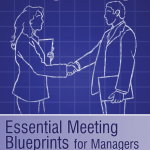 6 Things I Learned Writing a Book
6 Things I Learned Writing a Book
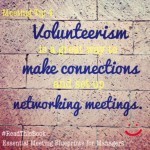 Networking Meetings Shouldn’t Be “All Take and No Give”
Networking Meetings Shouldn’t Be “All Take and No Give”
 Support the People Who Support You
Support the People Who Support YouThe post Quick Shots for #Business and #HR Pros – Spring Reading Edition appeared first on hr bartender.






April 23, 2015
Networking Meetings Shouldn’t Be “All Take and No Give”
(Editor’s Note: Today’s post is an excerpt from my book, “ Essential Meeting Blueprints for Managers .” The book is available on Amazon in hard copy and Kindle , in the iTunes store, and directly from the publisher.”
Networking meetings are about giving. When I share information with someone, it doesn’t mean they owe me. It’s possible that I will ask someone for information, and they’ve never asked for anything in return. I might start out a business relationship by giving more than I’m getting. You could also find this to be the case on social media platforms. You’re sharing more of other people’s work than they’re sharing of yours.
The spirit of networking isn’t about keeping score. Some people refer to it as paying it forward. It’s the expression used for describing when the beneficiary of a good deed repays it to someone other than the original benefactor. According to Wikipedia, the phrase may have been coined by Lily Hardy Hammond in her 1916 book, In the Garden of Delight.
In thinking about it, I believe we have to separate networking and paying it forward. Networking is about mutual exchange. Paying it forward is a gift with no expectation of return. In fact, the expectation is that you will gift someone else.
If done correctly, networking does have a “return the favor” element to it. We often feel obligated to do something nice for someone when they’ve done something nice for us. Granted, it might not be right away and there’s no scorecard to make sure the exchanges are always in balance. But I’m challenged to think of one situation where someone is very willing to be called upon repeatedly for business, information, and jobs without some level of future expectation.
I’ll confess. I know people who only call me when they are looking for a job. Now maybe they think I haven’t put the pieces together and don’t realize that. But as soon as I get a note saying, “Hey! I’ve been thinking of you. Let’s find time to have some sushi.” I know they’re looking for a job. This is not networking. If I choose to help them, it’s really a gift or a favor, depending upon how well I know the person.
We do favors for people we know. If a complete stranger asks for a favor, I’m not sure we process it the same way as when our best friend asks for a favor. This implies that a little mental benchmarking takes place when a favor is requested.
We do favors for people we like. Yes, admit it. Whether we know the person or not. If someone you don’t really care for asks for a favor, we are less inclined to help than if someone we like asks for a favor.
The challenge with networking is maintaining the balance. Networking is something we need to be successful in our careers. So we need to get something out of it. But to get something, we need to give something away. Successful networking involves looking at the big picture, not the short-term.
Networking shouldn’t be “all give and no take”
Click To Tweet
As you’re out there building your networking circle, the last thing to remember is that networking is forever. A HUGE mistake many people make is they don’t start building a professional network until they need one (translation: lose their job) – and then it’s too late. You need to network every day, all day and all the time. You never know who you might meet and when you will be presented with an opportunity – just make sure that you’re ready.
Image courtesy of Sharlyn Lauby
Related posts from HR Bartender:
 Quick Shots for #Business and #HR Pros – Spring Reading Edition
[image error]
Connections, Impressions and Engagement
Quick Shots for #Business and #HR Pros – Spring Reading Edition
[image error]
Connections, Impressions and Engagement
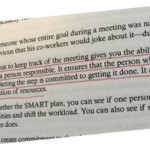 SMART-ly Tracking Your Progress
SMART-ly Tracking Your ProgressThe post Networking Meetings Shouldn’t Be “All Take and No Give” appeared first on hr bartender.






April 21, 2015
How To Build a Successful Mentoring Program
Organizations are facing some unique challenges when it comes to talent. The Boomer generation is planning to leave the workforce (or at least transition to part-time or semi-retirement). Companies want to make sure their organizational knowledge and history is passed along to new employees, who will lead the organization forward.
This isn’t a short-term process. As much as we might like the term Vulcan mind meld, that’s not an effective way to pass along knowledge. Not yet at least. So, for now, organizations should pass along knowledge over time, give people the opportunity to process it, use it in the daily operation, and ask questions about it.
The Kenan-Flagler Business School at the University of North Carolina just published a mentoring guide. It’s designed to help business leaders build internal mentoring programs. You can download a copy here. In talking with the school, they explained that they like to cover current topics that align with their core values. Mentoring does just that. It incorporates teamwork, leadership, honesty and a lot of trust. It’s a great overview and something you could distribute throughout the organization to gain support for building a mentoring program.
Once you have senior management support, you’ll want to get your hands on some specific resources to help you design the program. One of my go-to resources for design ideas is the Association for Talent Development’s (ATD) Infoline series. They have one titled, “Tools for Effective Mentoring Programs” that includes a program outline, matching process suggestions, mentor position descriptions and skills questionnaires.
For more detail, ATD also offers a book, “Creating a Mentoring Program” that includes how to conduct activities such as the launch meeting, celebrations, check-ins and closures. And if your organization isn’t the mentoring program type, check out Randy Emelo’s “Modern Mentoring”, which focuses on building a mentoring culture versus a mentoring program. I really enjoyed the section on the advantages (and challenges) of using gaming techniques in mentoring.
The point here is that mentoring has value and it’s very flexible to your culture and business needs. The UNC guide is a great place to start the conversation. And the ATD resources can help you develop a program that works for your organization.
One last thing to consider is developing the metrics for evaluating the mentoring program. This ties directly to the program goals. Most mentoring programs have three goals: 1) to assist in career development, 2) to increase staff retention and 3) to improve employee engagement. So the metrics should correspond to those goals.
Examples of metrics that can be developed include:
Measures of program quality such as percentage of mentors and mentees that have met at least once per month and percentage of completion in the program.
Measures of participant experiences include perceptions of value, match appropriateness, and levels of trust. This applies to both the mentee and the mentor.
Measures of organizational impact are those metrics that help the organization achieve their goals. This includes work performance, retention, recognition, etc.
Part of program design should include what metrics will be used to evaluate program effectiveness, what data will be gathered to create the metric, how often will the data be gathered, and what data points will be considered acceptable / unacceptable in evaluating the effectiveness of the program.
How to Build a Successful Mentoring Program
Click To Tweet
The beauty of mentoring programs is being able to tap into the organizations current talent to develop future talent. Luckily, there are many resources available to help develop programs that can have tremendous workplace value.
Does your organization offer a workplace mentoring program? Share your experience.
Image courtesy of Sharlyn Lauby
Related posts from HR Bartender:
 The Only 3 Reasons to Hold a Business Meeting
The Only 3 Reasons to Hold a Business Meeting
 Poll: Would You Be Open to Reverse Mentoring?
Poll: Would You Be Open to Reverse Mentoring?
 Mentors or Coaches – Why You Need Both
Mentors or Coaches – Why You Need BothThe post How To Build a Successful Mentoring Program appeared first on hr bartender.






April 19, 2015
Human Resources Shouldn’t Be a “Go-To” Function
Sometimes it’s easy to think that our own profession is the only one under the microscope. I know when it comes to human resources, I’ve seen more than my fair share of the “I Hate HR” type articles. The other day, I saw a post titled, “Traditional Marketing is Broken” and for a moment I was relieved. Certainly not because the author was saying that marketing function is broken but because the business changes being demanded of us impact every function and every level of the organization.
The conversation happening in human resources is one of many happening within businesses. Our roles and responsibilities are changing. One of the things that immediately caught my attention during SHRM Education’s Business Acumen: Integrating HR Across Operations was the definition that the facilitator used in describing human resources. He talked about HR as being the function that manages change within the organization. Not managing people, but managing change.
That’s (subtly) different.
Of course, change involves people. But it really speaks to the evolving role of human resources and where HR can have the greatest impact. This article in Fortune talks about how companies are giving their employees more power and the role of human resources is to help those employees leverage that responsibility in a positive and productive way. (Side Note: The article quotes Marcus Buckingham, who is one of the keynote speakers at this year’s SHRM Annual Conference.)
The way I see it, in order for HR leaders to successfully manage change within the organization, they need to understand the operation. Correction: HR needs to do more than just understand the operation. They must become part of the operation. Not simply a “to-go” department people visit when they have a problem. Check out this video from Padma Thiruvengadam, vice president of operations at Pfizer Oncology, talking about her thoughts on the role of human resources.
http://www.hrbartender.com/wp-content/uploads/2015/04/Padma-Thiruvengadamon-HR-Leadership.mp4
That’s where business acumen comes in. At the SHRM Education workshop, we spent two-days talking about the foundation of business acumen. And I don’t plan on regurgitating it in a post. That wasn’t the point.
The point was bigger than that. As human resources professionals, we need to learn the business speak of our industry and our organization. More importantly, we need to learn how to ask the questions that are going to help us learn the business of our company and industry. I thought one of the most poignant questions asked of us during the program was “Are we prepared to let our organization know what we do not know?”
Human Resources shouldn’t just be a “go-to” function
Click To Tweet
Think about that for a moment. As a HR leader, are you prepared to expose what you don’t know or is your plan to “fake it until you figure it out”? And the bigger question is, do you have time to figure it out on your own? Or do you need a book, class, course, mentor, etc. to help you gain the knowledge?
The business world is moving very quickly. We are all being asked to change. As HR leaders we need to have a firm grasp of basic business concepts like marketing mix, cash flow, supply chain and working capital. Business acumen allows us to be a part of the conversation. It provides us with the foundation to ask good questions about the new concepts emerging every day.
P.S. SHRM very graciously invited me to participate in this session. If you’d like to learn more about the sessions that SHRM is offering at the Annual Conference as well as around the country, check out the SHRM Education site.
Image – SHRM Logo and Video Used with Permission
Related posts from HR Bartender:
![The Top Competency for Human Resources [poll results]](https://i.gr-assets.com/images/S/compressed.photo.goodreads.com/hostedimages/1429610279i/14611813.jpg) The Top Competency for Human Resources [poll results]
The Top Competency for Human Resources [poll results]
 INTERVIEW: Dr. Jeff Pon, Chief Human Resources Officer at #SHRM
INTERVIEW: Dr. Jeff Pon, Chief Human Resources Officer at #SHRM
 The Business Case for Managing Ourselves
The Business Case for Managing OurselvesThe post Human Resources Shouldn’t Be a “Go-To” Function appeared first on hr bartender.






April 17, 2015
You Should Always Be #Recruiting – Friday Distraction
(Editor’s Note: Today’s post is brought to you by our friends at Kronos , the global leader in delivering workforce management solutions in the cloud. Forbes recently , and as one of America’s top 25 places to work in IT, Internet, software and services. Enjoy the post!)
We’ve been talking for a while about the growing challenges in finding the best talent. The discussion is starting to yield numbers. There’s a really good article over at TLNT.com titled “Another Sign of Tighter Labor Markets: Time to Fill Rates Getting Longer.”
I’ve always found the time to fill metric useful. Especially when it comes to talking with department managers about employee resignations. For example, if you use the measure found in the TLNT article, the average time to fill is 26 days. If an employee gives their department two-weeks’ notice, that’s 14 days. Meaning there are still 12 days of work that need to be covered. (Of course, this doesn’t take into account new hire onboarding and the time it takes for an employee to become fully productive.)
So when I saw this Time Well Spent cartoon from our friends at Kronos, I knew I had to share.
As the labor market continues to be a challenge, organizations will have to find more effective ways to fill positions. That includes using contingent labor and, like the cartoon says, always being on the lookout for talent.
You Should Always Be #Recruiting
Click To Tweet
At some point, companies might be faced with a difficult decision: Do I hire a very talented person even though I don’t have an opening? OR do I let them go and hope I can find someone when I have an opening? Trust me, it’s a tough decision.
Related posts from HR Bartender:
 Everything #HR Needs to Know About SaaS
Everything #HR Needs to Know About SaaS
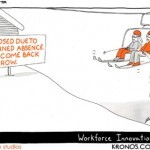 Planning For the Unexpected – Friday Distraction
Planning For the Unexpected – Friday Distraction
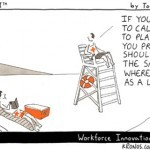 Playing Hooky – Friday Distraction
Playing Hooky – Friday DistractionThe post You Should Always Be #Recruiting – Friday Distraction appeared first on hr bartender.






April 16, 2015
The Work Opportunity Tax Credit (WOTC) Can Save Your Business Money
In the book “The Cobler of Preston,” Christopher Bullock wrote the famous line, “’Tis impossible to be sure of anything but death and taxes.” As sure as we are about paying our taxes, one thing we’re often unsure about is getting tax relief. That’s why I wanted to share some information about a tax credit opportunity I learned about.
The Work Opportunity Tax Credit (WOTC) is not a new program. It’s a Federal tax credit available to employers for hiring individuals from certain target groups. But did you know that it was on hiatus in 2014, and after a short renewal, is in hiatus again? It was recently re-enacted retroactively. So businesses have a short window to screen applicants and apply for this credit. And by short window, I mean the end of this month (April).
Since I’m not current on the details of this re-enactment, I asked Ezrie Yellin, product manager in the tax credits and incentives division of Equifax Workforce Solutions. They have helped us before with updates to the Form I-9 and understanding the Fair Credit Reporting Act (FCRA).
Ezrie, for our readers who might not be familiar, can you briefly describe the Work Opportunity Tax Credit (WOTC).
 The Work Opportunity Tax Credit (WOTC) provides income tax incentives to businesses that hire workers that have significant barriers to employment, as outlined by the Department of Labor. These individuals include veterans, those on temporary financial assistance, and residents of certain geographic zones (A full list can be accessed here). The WOTC offers Federal tax credits ranging from $2,400 to $9,600 per eligible employee.
The Work Opportunity Tax Credit (WOTC) provides income tax incentives to businesses that hire workers that have significant barriers to employment, as outlined by the Department of Labor. These individuals include veterans, those on temporary financial assistance, and residents of certain geographic zones (A full list can be accessed here). The WOTC offers Federal tax credits ranging from $2,400 to $9,600 per eligible employee.
Employers have equal access to tax credits, regardless of location; this Federal program is available to all income tax-paying employers in all 50 states, Puerto Rico and the U.S. Virgin Islands.
How do businesses benefit from the WOTC?
The WOTC program has multiple benefits:
For workers: The WOTC helps remove barriers to hire by helping to offset the cost of hiring and training, in addition to other opportunities for employment.
For Employers: Organizations can reduce their tax liabilities, impacting their bottom-line and allowing them to invest further resources in their company and employees. Employers also gain access to great employees who are proven to perform as well as their peers.
For the community: The WOTC boosts the economy by reducing unemployment rate and reducing individuals’ dependency on government assistance programs funded by taxpayers.
Why did the WOTC program take a hiatus in January 2014?
As a government incentive that requires legislative authority, the WOTC program has experienced periods of hiatus – times in which the legislative authority of the program lapses. From January 1, 2014, through December 19, 2014, the program was in a hiatus period that ended when the President signed the Tax Increase Prevention Act of 2014 into law. This act extended the WOTC retroactively from January 1, 2014 through December 31, 2014.
Now that the program has been re-enacted retroactively, how do businesses (retroactively) screen applicants to receive their benefits?
Recently, the IRS issued notice 2015-13, which offers the WOTC hiatus ‘transition relief’ for the 2014 calendar year. Taking into account that the 2014 WOTC hiatus had detrimental effects on employers’ tax planning and business strategies, the Internal Revenue Service (IRS) is now forgoing the normal 28-day filing deadline for the WOTC so as to allow employers to capture any missed tax credits that may have gone unclaimed in 2014 while the future of the WOTC program was uncertain. The IRS notice states:
“Because the Act extended the WOTC retroactively for 2014 for members of targeted groups, employers need additional time to comply with the requirements of § 51(d)(13)(A). Accordingly, a taxable employer that hired a member of a targeted group (as defined in §§ 51(d)(2) through (10)), or a qualified tax-exempt organization that hired a qualified veteran described in § 51(d)(3), on or after January 1, 2014, and before January 1, 2015, will be considered to have satisfied the requirements of § 51(d)(13)(A)(ii) if it submits the completed Form 8850 to the appropriate DLA to request certification not later than April 30, 2015.”
The WOTC certification requests for all hires made during the transition (aka hiatus) period can be filed until April 30, 2015. If a company had not previously participated in the WOTC program, this is an unprecedented chance to recapture a year’s worth of missed credit opportunities, amounting to tax savings of up to $9,600 per eligible hire. If a company did participate in 2014, but missed individual screenings, these credits can now be captured as if completed on-time.
How does a company apply for credit?
Employers are required to identify new hires as potentially eligible for the credit by having the individual fill out and sign the IRS Form 8850, or Pre-Screening Notice and Certification Request for the Work Opportunity Credit. This document must also be signed by the employer or their agent. Additionally, the employer must fill out the Department of Labor Form 9061, or Individual Characteristics Form (ICF). Typically, both forms must be provided to your State Workforce Agency within 28 days of the individual’s hire date to be considered for certification. Both forms can be filled out electronically by both the employee and the employer.
Last question, can you share a few tips for organizations wanting to make sure they are getting the full benefit of this program?
Employers who wish to take advantage of this rare “retro-WOTC” opportunity can get full benefit by:
Identifying and screening all hires who were not screened during the dates of hiatus period. Employers may also identify all individuals who, if screened during the hiatus period, did not fully complete or sign their 8850 or electronic screening.
Maximizing efficiency, effectiveness and eligibility determinations by offering eSignature options in screening workflows. Employers can and should integrate screening processes into onboarding or applicant tracking workflows. Also, employers should meet their employees where they are by offering retro-screenings on paper, by phone-in (IVR), or online screening methods.
Filing all new and newly complete WOTC forms with the State Workforce Agency (SWA) by April 30, 2015. Any forms not so filed will be denied certification by the SWA.
Tracking and reporting on hours and wages of potentially eligible hires in the hiatus period to ensure proper credit identification and capture, and estimated tax payments and savings.
My thanks to Ezrie for sharing this update. Just in case you’re wondering about the status of the WOTC for 2015, Ezrie says that the program expired on December 31, 2014 and has re-entered hiatus status effective January 1, 2015 pending legislative renewal. If you want to stay on top of this issue in the future, you can follow updates on the Equifax Insights blog or sign up for the HR Issues Update e-newsletter distributed by the Society for Human Resource Management (SHRM). It’s delivered every other week when Congress is in session.
Image courtesy of Sharlyn Lauby
Related posts from HR Bartender:
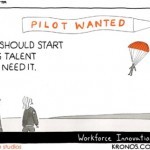 You Should Always Be #Recruiting – Friday Distraction
You Should Always Be #Recruiting – Friday Distraction
 Will Technology Replace Recruiters – Ask #HR Bartender
Will Technology Replace Recruiters – Ask #HR Bartender
 Message and Medium
Message and MediumThe post The Work Opportunity Tax Credit (WOTC) Can Save Your Business Money appeared first on hr bartender.






April 14, 2015
Aligning #HR Technology With Your Talent Decisions
(Editor’s Note: Today’s post is brought to you by our friends at SilkRoad , a leading global provider of cloud-based talent management solutions. They have just launched a new online resource center to showcase research and analyst reports on HR technologies to help HR professionals leverage employee data in business decisions.)
Business leaders today are faced with a long list of talent decisions. Every day, they have to decide:
Who should we hire?
What is the best use of their talents (as a full-time, part-time or contractor)?
Who should we include in the succession plan?
How should we develop current employees for future opportunities?
Are there employees we need to redesign work for?
Are there employees ready to retire and we need them to share their knowledge?
Do we have employees that don’t seem happy or engaged with the organization?
Does the company have redundant or obsolete positions?
And, the list goes on. These questions aren’t just human resources questions. They happen in every department. In many cases, department managers are looking to human resources to help answer these demands. Which raises the question, how can HR help department managers make talent decisions.
There are two essential components to making talent decisions. The first is to use the right process. The second is to use the right information.
In talking about the right process, we mean making talent decisions in a fair and compliant manner. The decision should align with federal, state and local legislation. It should follow company policy. The decision needs to be fair. Please note that I didn’t say everyone needs to love the decision. Sometimes employees are disappointed when they don’t get a promotion, etc. But they can still respect the process.
The other piece to decision making is using the right information. By that I mean data that is consistent, accurate and timely. One of the most effective ways to ensure that employee data is up-to-date is by using a human resources management system (HRMS). Before we go any further, let’s define what a HRMS is and does. Not every company has an HRMS.
An HRMS is a single system that allows companies to manage employee, job and organizational data. Traditionally, the information is basic employee data used primarily for payroll and benefits purposes. HRMS can also offer scheduling, time and attendance, and absence management functions.
Many HRMS solutions are compatible with other HR-related software solutions such as applicant tracking, onboarding, performance management and learning. Even as a stand-alone system, HRMS solutions bring a tremendous value to the business. Obviously, they organize one of the biggest expenses in the operation: payroll. But an HRMS has reporting functionality so information can be utilized and analyzed to make strategic talent decisions.
For example, let’s say your organization has a new senior vice president of operations who wants to restructure the organization. An HRMS allows you to provide information about employees by job title, location, etc. to assist with the conversations about the new organizational chart.
When used with other solutions, an HRMS can provide an extra level of detail. Let’s say your company is considering opening a new location. As part of their strategic plan, they need to include a hiring strategy. With a combined HRMS and recruiting solution, information about sourcing methods and time-to-fill can be accessed to develop that plan. Otherwise, you’re looking at long hours and Excel spreadsheets.
I realize for some readers this is a no-brainer. You may have a full-suite of human resources technology. But it’s important to have these conversations because not everyone does. And not everyone who has the technology takes full advantage of its capability. I was at a meeting recently and started chatting with the vice president of human resources from a company with tens of thousands of employees. He said, “We have the best operations technology in the world. We can tell you how many seconds and the cost it takes to do something in our business. But we can’t tell you how many people work for the company.”
Think about how that limits the talent decisions being made in that organization.
How to Align #HR Technology with Your Talent Decisions
Click To Tweet
So I hope you’ll join me and the folks from SilkRoad on Wednesday, April 29 when we’ll continue this conversation about aligning human resources technology and talent strategies. You can find details and registration info regarding the webinar here. Even if you can’t make it, go ahead and register so you get access to the recorded archive.
Technology provides us with the ability to effectively and efficiently collect data we need to run the business. It’s part of our role as human resources professionals to make sure our organization is aware of what HR technology brings to the party.
Related posts from HR Bartender:
 How to Hire Employees for a Cultural “Fit”
How to Hire Employees for a Cultural “Fit”
 The Capabilities of HR Technology – Ask #HR Bartender
The Capabilities of HR Technology – Ask #HR Bartender
 Aligning Talent Development with Your Company’s Strategic Plan
Aligning Talent Development with Your Company’s Strategic PlanThe post Aligning #HR Technology With Your Talent Decisions appeared first on hr bartender.






Sharlyn J. Lauby's Blog
- Sharlyn J. Lauby's profile
- 10 followers



